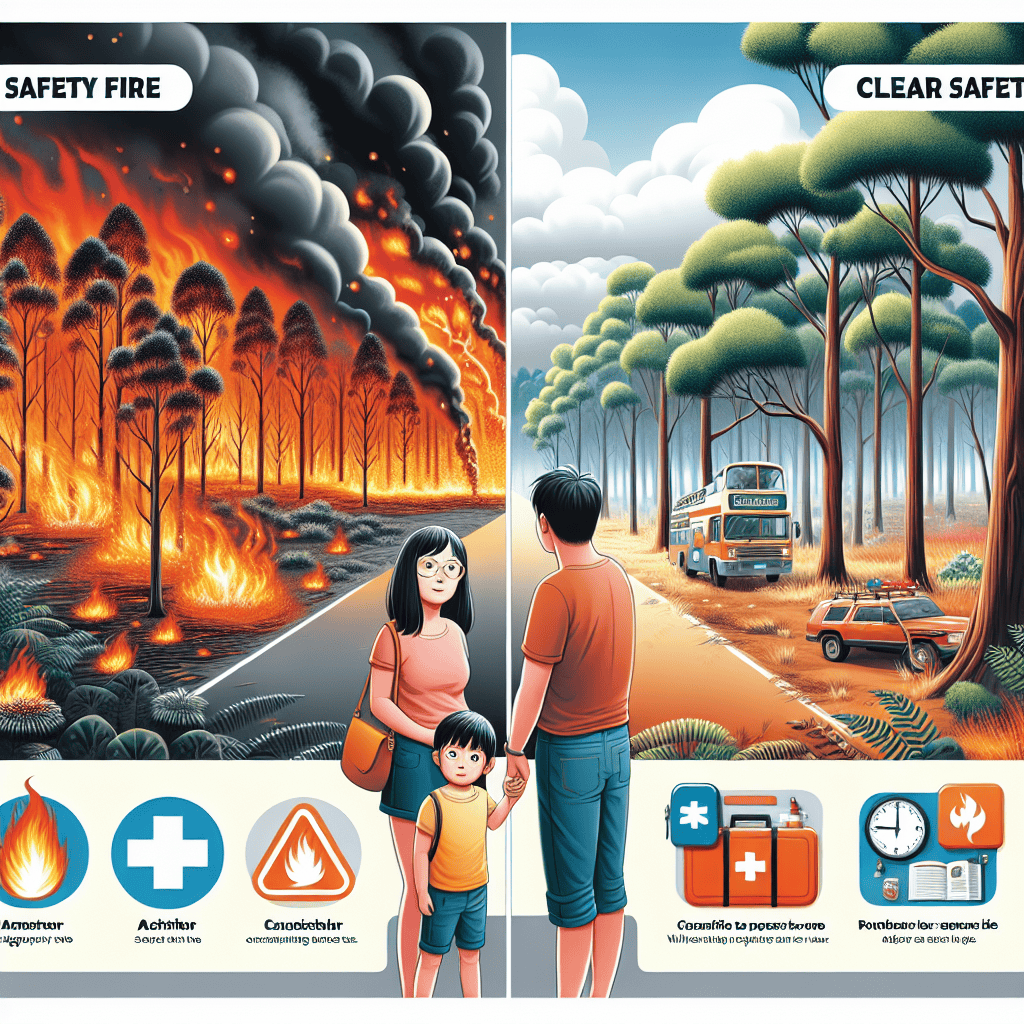Bushfires are a natural part of life in Australia, particularly during the annual fire season. However, they can escalate quickly, devastating communities and lives if not managed effectively. As the risk of bushfires increases each year, it’s crucial to know how to stay informed, safe, and prepared. This article provides actionable strategies and reliable resources to help you protect yourself, your family, and your home during a bushfire emergency.
Why Staying Informed is Critical
During bushfire season, information can mean the difference between life and death. Staying up to date with official warnings and alerts ensures you’re making proactive and informed decisions to stay safe. Bushfires can spread rapidly depending on weather conditions like high temperatures, strong winds, and low humidity, leaving little time to react if you’re caught off guard.
How Bushfire Warnings Work
In Australia, bushfire warnings are issued in stages to indicate the urgency of the situation. These warnings typically include:
- Advice Alerts: There’s a fire in your area, but no immediate threat to your safety. Stay updated and prepare for changing conditions.
- Watch and Act Alerts: Fires are approaching or growing. You need to take action to stay safe.
- Emergency Warnings: Fires are threatening lives or properties. Immediate action, such as evacuation, is required.
Understanding these levels is important for prompt decision-making. Be sure to also monitor messages about weather changes, road closures, and evacuation points.
Where to Stay Updated
Modern technology offers several channels to receive timely updates on bushfires. Here are some reliable sources:
- The VicEmergency App: A highly recommended resource for Victorians, offering real-time fire alerts and updates.
- Local Emergency Broadcasters: ABC Radio often provides live updates during bushfire crises.
- Social Media: Official Twitter and Facebook accounts from state fire authorities can keep you updated, but ensure you’re getting information from a verified source.
- Stay Connected with Neighbours: Community members often have valuable local insights and updates to share.
Preparation is Key
While staying informed is essential, preparation is the cornerstone of bushfire safety. Planning before a fire threatens your area will help reduce panic and confusion when it matters most.
Creating a Bushfire Survival Plan
Every household in bushfire-prone areas should have a detailed survival plan in place. Your plan should cover:
- Evacuation Routes: Identify multiple exit points from your home and community.
- Emergency Kit: Pack essentials like drinking water, non-perishable food, medications, a first aid kit, and important documents.
- Family Communication Plan: Decide how you’ll stay in contact with loved ones during an emergency.
- Pets and Livestock: Have a clear plan for evacuating and sheltering animals.
Practicing your plan regularly will help you stay calm and make quick decisions under pressure.
Prepare Your Property
Reducing the fire risk around your home is another critical step. According to fire safety guidelines, you can prepare your property by:
- Clearing leaves, branches, and other debris from gutters, roofs, and around your house.
- Cutting back vegetation close to your home to create a defensible space.
- Storing flammable items like firewood and gas bottles away from buildings.
- Installing ember guards on windows and doors.
- Ensuring your hose can reach all areas of your property.
What to Do During a Bushfire
When a bushfire is approaching, it’s vital to act quickly and decisively. Here’s what you need to do depending on your situation:
Evacuate Early
The safest option during a bushfire is to leave early, especially if your property is difficult to defend. Make sure to:
- Monitor evacuation orders from emergency services.
- Take your emergency kit and essential belongings with you.
- Let family and friends know your destination and when you plan to arrive.
Evacuating early reduces the chance of being caught unpredictable fire conditions or blocked roads due to smoke or flames.
Shelter Safely If You Can’t Leave
If it’s impossible to evacuate, prepare to shelter as safely as possible on your property or in a designated refuge. For example:
- Move to a room with two exits, a water source, and minimal flammable materials, like a bathroom.
- Stay inside to avoid radiant heat from the fire.
- Wear protective clothing, covering as much skin as possible to shield against radiant heat and ember attacks.
Always follow instructions from emergency services and be prepared to leave the moment it’s safe to do so.
After the Fire
Even after the flames are extinguished, the danger may not be over. Return to your property with caution and only once authorities have confirmed it’s safe. Watch out for hazards such as fallen power lines, unstable structures, and smoldering debris. Always follow these steps:
- Check for updates from emergency services and health departments regarding air quality and water safety.
- Photograph any damage for insurance claims.
- Seek emotional support if needed, as surviving a bushfire can be traumatic.
Final Thoughts
Bushfires are unpredictable and dangerous, but with adequate preparation and access to reliable information, you can greatly reduce the risks to you and your loved ones. Use resources like the VicEmergency app, involve your community, and make bushfire safety a priority during fire season. Remember: staying informed and acting early are your best defenses against the devastating effects of bushfires.
By taking these steps, you’ll not only protect your family but also help your wider community withstand the challenges of bushfire season. Stay safe, stay informed, and always be prepared.
“`


